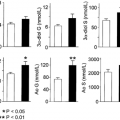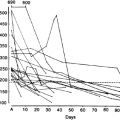TROPHOBLAST HORMONES
The placenta produces a wide variety of regulatory hormones. In fact, it is difficult to find anything not made by placenta that is produced elsewhere in the body. Many regulatory molecules produced by human trophoblastic tissue are summarized in Table 112-1.7,8,10,11,12,13,14,15 and 16 These hormones have diverse functions in the fetoplacental unit and in maternal and fetal tissues. Interestingly, some have similar functions, suggesting there might be a hierarchy. Having more than one regulatory hormone may allow for more control points in the regulation. Control of cytotrophoblastic differentiation is one example of multiple regulatory agents having a similar function with one playing a central role. Like hCG, epidermal growth factor (EGF), transforming growth factor-α (TGF-α), and leukemia inhibitory factor (LIF) promote differentiation and also increase the synthesis of hCG.17,18,19,20 and 21 Inhibiting hCG-receptor synthesis by treatment with 21 mer phosphorothioate antisense oligodeoxynucleotide prevents not only hCG action, but also the actions of EGF, TGF-α, and LIF in promoting differentiation of cytotrophoblasts.22,23
Stay updated, free articles. Join our Telegram channel

Full access? Get Clinical Tree





